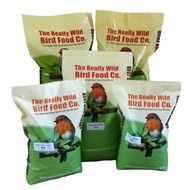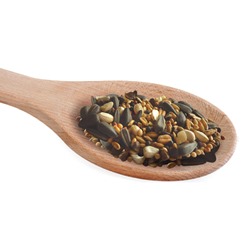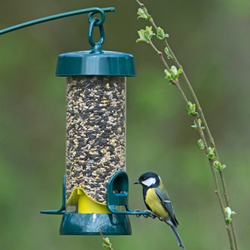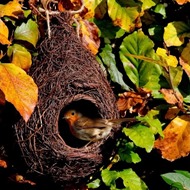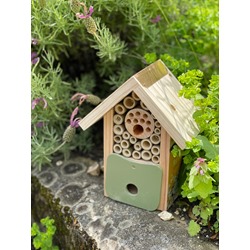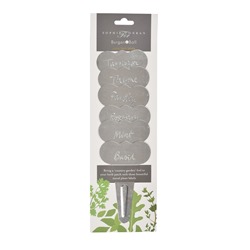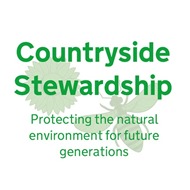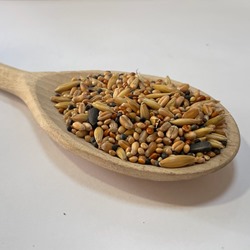You don't need a large garden to make birds feel at home!
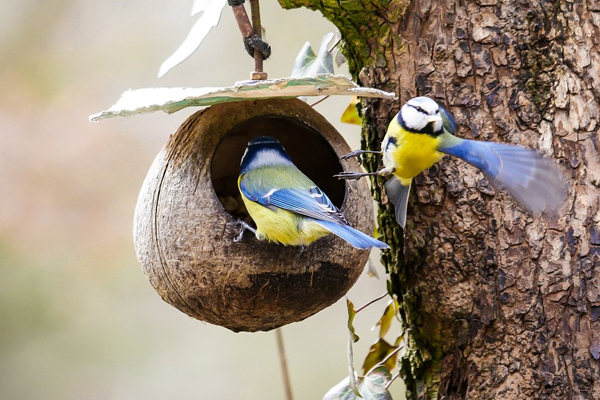
It's estimated that there will be more than 28.3 million households in the UK by the end of 2022. Because space is limited, new build estates are smaller than they used to be, and the size of the average British garden is trending downwards too.
But a small garden needn't mean that you can't enjoy feeding wild birds! In this blog post, we'll show you how to utilise your space effectively, and before you know it, your little garden will be the go-to dining spot for a variety of feathered friends.
1. Provide a good selection of bird food
A lack of space doesn't mean a lack of options when it comes to choosing the right food for your garden birds. Much like humans, different birds like different foods - and if you offer a variety of foods in your garden, you're more likely to attract a wide range of birds.
No matter how small your garden may be, it is always important to choose high-quality food that will give your garden birds the nutrients that they need.
There are many different types of bird food that you can try out in your garden; here are just a few examples!
Also remember to provide a water source for them - not only will this attract them to your garden, but it will also attract insects. Wherever there are insects, birds will always follow.
2. Welcome long-term lodgers
Why not install nesting boxes so that your garden can serve as a permanent haven for some lucky bird? If the space allows for it, even a small garden can be the perfect environment for a bird in search of a new home. There's no better way to ensure that you'll be greeted with birdsong in the morning, and who wouldn't want that! If you don't fancy a nest box, you could opt for a nest pocket - a cute and cosy alternative for nesting and shelter.
Robins, blue tits and great tits are likely to bask in the cosiness of a small garden, and even house sparrows, starlings and swifts may use it as a nesting habitat.
In fact, installing a nest box may be the ideal option for a smaller garden. There needs to be a clear route from the feeder to the nest box, so a smaller garden means an easier journey for your avian guests.
Most importantly, remember to keep any feeding areas clean within your garden. You wouldn't want to eat in a messy kitchen!
3. Utilise your window space
Your window space still counts as part of your garden. You can use window feeders to maintain closer contact with your garden birds while also taking up minimal space. When trying to select the perfect place for your window feeder, be sure to take the height of the ledge into account - after all, you will need to be able to refill the feeder!
You can purchase window feeders that are specifically designed to hold the many varieties of bird food, including a suction Basket Ball Window Feeder for fat balls, or an I Love Robins Window Feeder for wriggly mealworms.
Window boxes are an excellent way to attract birds if space is really limited. Add a few sunflowers, teasels and honeysuckle to your box to provide cover and seeds for birds to feed on. If they know your garden is a safe place for food and shelter, they'll be sure to return!
4. Smaller can be better!
A smaller garden means less maintenance, and while it also means less room, you should still be able to see an abundance of garden birds enjoying your outdoor space.
With a variety of foods, different types of bird feeders, and the opportunity of a long-term stay, you'll have birds flocking in to join your garden in no time.
If you have any questions about garden birds and what they eat, please feel free to send us a message!
Ask a Question
 Back
Back Bird Foods
Bird Foods
 Seed Mixes
Seed Mixes Straight Seeds
Straight Seeds Mealworms & Worms
Mealworms & Worms Chicken Feed
Chicken Feed Duck Food
Duck Food Peanuts & Peanut Butter
Peanuts & Peanut Butter Suet & Fat Balls
Suet & Fat Balls No Mess Bird Seed
No Mess Bird Seed Wheat Free Bird Seed
Wheat Free Bird Seed Sunflower Seeds
Sunflower Seeds Softbill Bird Food
Softbill Bird Food Bulk Bird Seed
Bulk Bird Seed Trial Packs
Trial Packs Pick & Mix
Pick & Mix Mini Pick & Mix
Mini Pick & Mix Birdie Basics: Budget Bird Food
Birdie Basics: Budget Bird Food Food for Small Birds
Food for Small Birds Back
Back Bird Feeders
Bird Feeders
 Seed Feeders
Seed Feeders Peanut Feeders
Peanut Feeders Peanut Butter Feeders
Peanut Butter Feeders Suet & Fat Feeders
Suet & Fat Feeders Window Feeders
Window Feeders Hanging Feeders
Hanging Feeders Feeding Stations
Feeding Stations Ground Feeders
Ground Feeders Easy Clean Feeders
Easy Clean Feeders Bird Tables
Bird Tables Seed Trays
Seed Trays Bird Baths & Drinkers
Bird Baths & Drinkers Feeder Accessories
Feeder Accessories Feeder Hygiene
Feeder Hygiene Squirrel Proof Bird Feeders
Squirrel Proof Bird Feeders For the Kids
For the Kids Niger Seed Feeders
Niger Seed Feeders Mealworm Feeders
Mealworm Feeders Bird Food Storage
Bird Food Storage Fat Ball Feeders
Fat Ball Feeders Tube Feeders
Tube Feeders



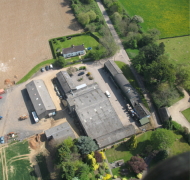 Our Farm
Our Farm
 Tips & Advice
Tips & Advice
Contact Us

